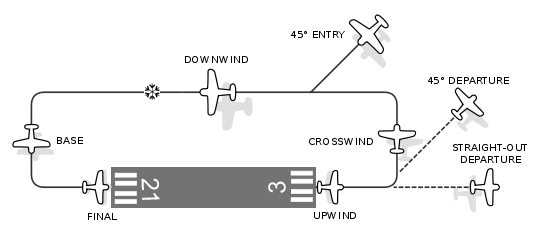If there's a 172 on six mile final for that 2000 foot runway, cutting it off so it has to alter its approach still violates 91.113(g).
And if it's Learjet? How's one s'posed to see it in 3 miles visibility?
OTOH, if that B747 is on even a 3 mile final for a 12,000 foot nontowered runway and you can turn in front without forcing it to alter its approach, you haven't.
You haven't read
all of Boardman... have you? Take a look at this:
"The transcript of communications includes a record of respondent stating “Alaska 51 on a four mile right base. ..” (Exh. A-2). Although respondent testified that the communication was only made to notify that the flight was in the area, in our view it is further evidence in support of the
conclusion that the respondent’s aircraft approached the airport on a right base leg."
Turning final even at 4 miles isn't good enough if making a right turn in the Board's eyes.
You're mixing apples and oranges.
Well, I am a vegetarian.

The 91.113(g) right-of-way issue is entirely independent of how far out on final the straight-in aircraft is -- no matter how far or how close in it is, or whether it turned in from the "normal" pattern or joined the final from the "wrong" side a long way out, you cannot force it to alter its approach. The only thing that distance out affects is whether or not the aircraft joining the final is doing so "in the vicinity of [the] airport" per 91.126 for the purpose of determining whether the direction of turn when joining was legal, and that has no bearing on 91.113(g) right-of-way issues.
You're mixing apples and lemons. More of Boardman one:
"The parties agree that, in preparation for landing, respondent did not make all turns to the left as set forth in § 91.89(a)(l). Instead, the aircraft set up to the runway by making a turn to the right. The dispute here centers on one question: whether respondent’s approach included a prohibited right turn, or whether it should have been considered a “straight-in” approach not prohibited by § 91.89(a)(l). The answer to that question depends on the distance to the airport when the right turn was made. The Board finds that the evidence of record supports the law judge’s order, although we do not adopt all of his findings."
As an example of the judge's findings the Board does not adopt, in footnote #6, they say this:
"6 For example, the law judge determined that a turn in anticipation of a straight-in approach, made at 5 or 6 miles out, would not be considered a violation..."
"Cutting off" another airplane may not preclude that plane from landing, but may well be considered illegal just the same. I don't get why you keep drawing the distinction, since both rules ('right of way' and 'standard turn direction') mean to prevent collisions. In fact, the Board said that too:
"5 FAR § 91.89(a)(l) is intended to assist in safe landings at non-controlled airports. If aircraft are turning into final approach from different directions, they may not see (or be able to see) each other. This is especially true with larger aircraft. Thus , if turns are to be made, they are made in a
uniform pattern. Alternatively, aircraft may land on a "straight-in” approach."
I think we both agree that pilots shouldn't make right turns to final without giving serious consideration to how they would look in the event something unexpected happens that causes their decision to be scrutinized by the FAA, like a near-miss. Or a noise complaint. Or a disgruntled airport manager. For straight-ins, the longer the final is--the better, legally speaking.
dtuuri








